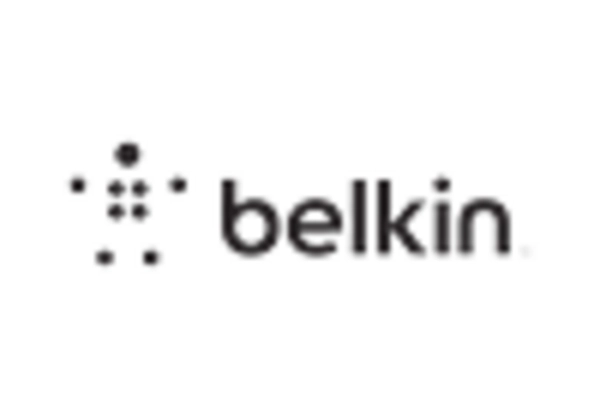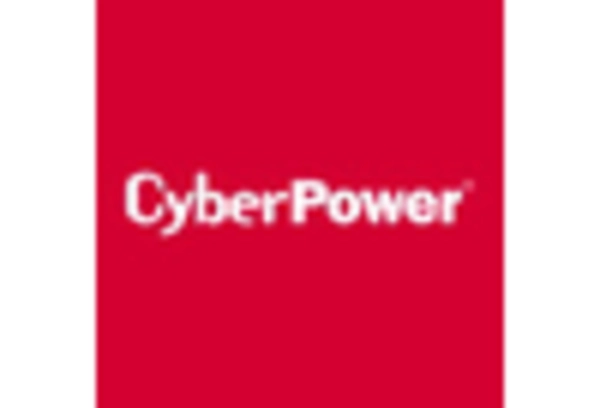Growth of Home Office Spaces
The shift towards remote work has significantly influenced the power strip market in North America. As more individuals establish home offices, the demand for reliable power solutions has escalated. In 2025, it is projected that over 30% of the workforce will continue to work remotely, necessitating the use of power strips to accommodate multiple devices such as computers, printers, and monitors. This trend has prompted manufacturers to develop power strips with features tailored for home office environments, including surge protection and USB ports. Consequently, the power strip market is poised for growth as it adapts to the evolving needs of remote workers.
Rising Demand for Electronics
The increasing reliance on electronic devices in North America is a primary driver for the power strip market. As households and businesses adopt more gadgets, the need for efficient power management solutions becomes critical. In 2025, it is estimated that the average household owns over 10 electronic devices, leading to a surge in demand for power strips. This trend is particularly pronounced in urban areas, where space constraints necessitate the use of power strips to maximize outlet availability. The power strip market is likely to benefit from this growing consumer behavior, as manufacturers innovate to provide versatile and user-friendly products that cater to diverse electronic needs.
Regulatory Standards and Compliance
Regulatory standards play a crucial role in shaping the power strip market in North America. As safety regulations become more stringent, manufacturers are compelled to enhance the quality and safety features of their products. Compliance with these standards is essential for market entry and consumer trust. In 2025, it is anticipated that adherence to safety regulations will drive innovation, leading to the development of power strips with improved surge protection and child safety features. This focus on compliance not only ensures consumer safety but also positions the power strip market for sustainable growth as it meets evolving regulatory requirements.
Increased Focus on Energy Efficiency
Energy efficiency is becoming a paramount concern for consumers and businesses alike, driving innovation within the power strip market. With rising energy costs and environmental awareness, there is a growing preference for power strips that offer energy-saving features. In 2025, it is anticipated that energy-efficient power strips will account for approximately 25% of total sales in the market. These products often include timers and smart technology that help reduce energy consumption when devices are not in use. As a result, the power strip market is likely to see a shift towards more sustainable product offerings that align with consumer values.
Technological Advancements in Power Management
The power strip market is experiencing a transformation due to technological advancements in power management solutions. Innovations such as smart power strips, which allow users to control devices remotely via smartphone applications, are gaining traction. In 2025, it is expected that smart power strips will represent a significant portion of the market, driven by consumer demand for convenience and automation. These products not only enhance user experience but also contribute to energy savings. As technology continues to evolve, the power strip market is likely to witness further developments that integrate advanced features, appealing to tech-savvy consumers.


















Leave a Comment